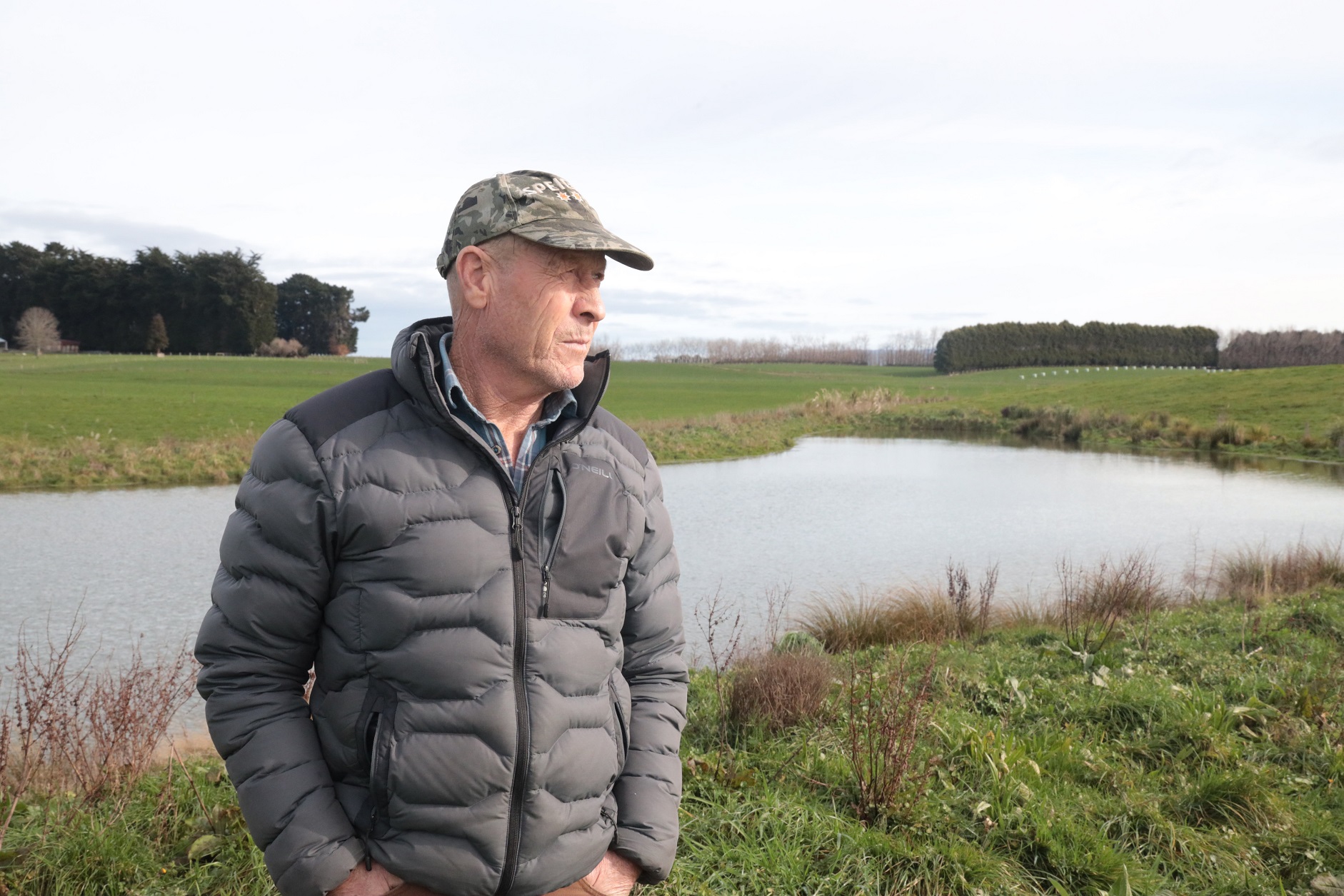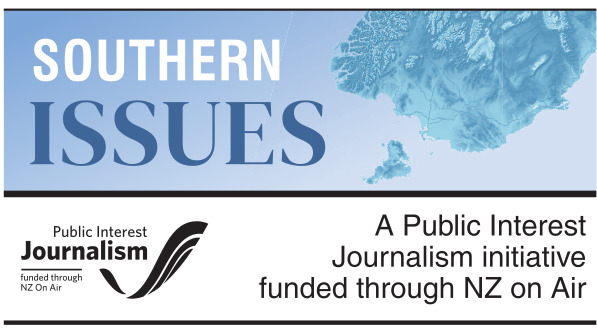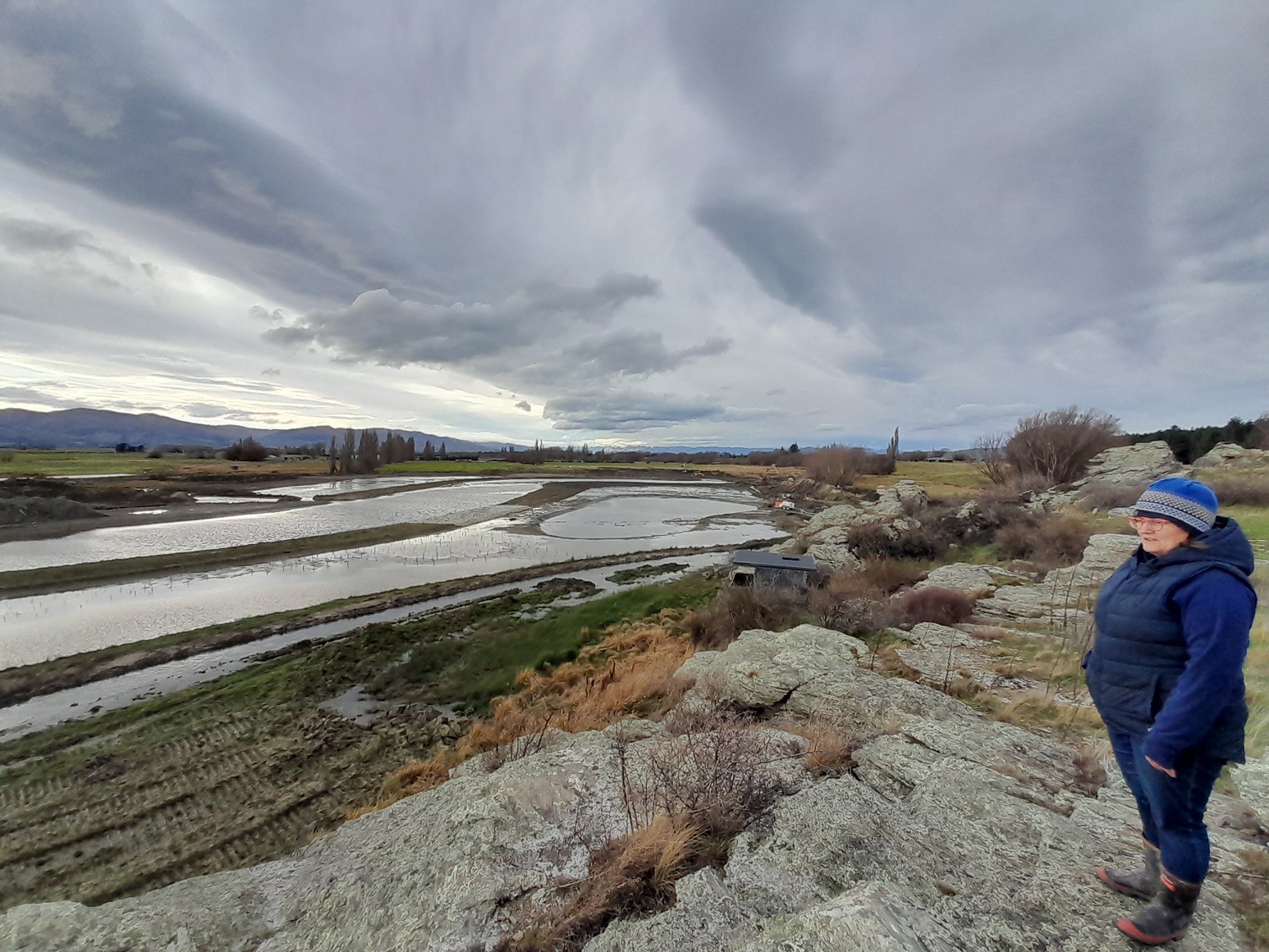
Completed last month, at a cost of $1.3 million, the 3.5ha wetland — costing more than $370,000 per hectare — is at the bottom of the 6740ha Thomsons Creek sub-catchment near Omakau. The wetland aims to reduce farm sediment and nitrogen load entering the Manuherikia River — a channel, dubbed the "sludge channel", drains into the creek and the wetland.
The funding comes from a $2.8m Ministry for the Environment (MfE) grant awarded as part of an "at-risk" catchment programme, launched in 2020 and then renamed "exemplar" programme.
MfE worked with national farm body Beef + Lamb NZ to scout for catchment groups to fund.
A Beef + Lamb NZ youtube video discusses the funding being awarded after the body was "approached" by a farmer in a "fish and chip shop" about starting a catchment group. The Thomsons catchment group is one of only three awarded nationally — the other two are in Marlborough and the North Island.
Central Otago Environmental Society (COES) chairman Phil Murray said the society had "serious concerns about the direction and appropriateness of the MfE programme supporting the project" and was "doubtful" regarding the wetland’s effectiveness when "transformational change in the farming system" was needed away from irrigated cattle farming — including dairy.
Describing the Thomsons Creek wetland as "very expensive", Mr Murray said: "Without major changes in on-farm water management and significant changes in land use itself, this wetland is simply greenwashing".
"We support all mitigation measures that have environmental impact and there are good farmers out there trying to do the right thing, but mitigation measures alone are not going to cut it for water quality in the Manuherikia," Mr Murray said.
"It is not OK to have an expansion of water-dependent and polluting land uses such as dairy and dairy support."
Mr Murray said COES was only invited to join a Thomsons Creek project "governance group" after the wetland was planned — and only agreed to support its build because plans were in train. Criticisms COES raised were not minuted by the group, he said.
Forest and Bird’s freshwater advocate Tom Kay called for land use change as a priority for any public funding of environmental improvements on farms rather than "panaceas".
"We know the system is broken — we have intensified farming too much. Rather than throwing money at propping up the status quo, we need to be helping farmers transition from intensive animal farming to more sustainable farming. Expensive mitigation measures are an ambulance at the bottom of a cliff and government funding for it is public subsidy of an unsustainable system."

Fish & Game, which helps farmers create lower-cost wetlands, also sits on the governance group of the Thomsons Creek project.
Communications officer Bruce Quirey said Fish & Game was "bound by a confidentiality agreement that restricts comments" but said cost could be a significant barrier to farmers creating wetlands.
Multiple, small-scale wetlands across an area "are easier to construct, easier to manage, and in combination can be more effective at stopping excess of nutrients and sediment from getting into waterways", he said.
Gavin Macpherson and his son Luke have created a 2.5ha wetland for $35,000 — a cost of just $14,000 per hectare — at the 290ha Waianiwa Dairy Farm near Invercargill, where they milk 780 cows since converting from sheep and deer in 2001.
The wetland, which services 115ha of the farm, was constructed with the help of a $4700 grant from a wildlife trust. Plants were donated by Fish & Game.
The wetland was assessed by Environment Southland as effective at reducing sediments and excessive nutrients and Mr Macpherson had noticed an increase in bird life. He said the wetland was "good bang for buck".
He encouraged more farmers to build wetlands, but did not rule out land use change.
"Thirty years ago I never thought I would be dairy farming. Who knows, we could be growing oats in 10 years."
Responding to an Otago Daily Times OIA, MfE director of implementation Sara Clarke said the exemplar programme aimed to "give communities opportunity to try an alternative, non-regulatory approach to improving water quality ... and knowledge sharing".
However, Ms Clarke described winter grazing and intensification as "high-risk activities" and said in the Manuherikia "the exemplar programme is a piece of the puzzle, alongside regulatory measures, to start to address the issues in the catchment."
MfE has never defined what it meant by "at risk", but the Land and Water Forum, which helped shape government freshwater policy, defines "at-risk" catchments as places where there is water quality decline, water resource is under pressure or at risk from existing or anticipated land use change and urgent action is needed to prevent irreversible detrimental change.
Thomsons Creek project manager Nicola McGrouther — funded by the MfE grant — defended the wetland’s cost, saying the catchment group had taken advice from water research agency Niwa.

Rising construction costs, sediment traps, plants and labour were collectively a "massive" cost, she said.
Niwa principal scientist Chris Tanner said "performance and credibility" were important to the project.
However, he agreed "smaller scale wetlands on farms can be built a lot cheaper".
Part of the expense within the Thomsons Creek project was creating engagement with tourists. Boardwalks were planned on to the wetland from the nearby Otago Central Rail Trail, he said.
When asked if achieving healthy freshwater in the Manuherikia would require consideration of system or land use change, Ms McGrouther declined to comment.
However, she said further mitigation actions, such as smaller wetlands across the Thomsons Creek sub-catchment, were a possibility.
"It’s so disappointing in light of the amazing community effort to hear criticism of a project totally aimed at environmental improvements.
"The community, the farmers, the local businesses in Thomsons Creek have come together to make this happen," she said.
"This project is all about farmers, including dairy, working hard to continue to put in place measures that protect and enhance their land and waterways that run through them".
Farmers Pete and Robin McLeod, on whose land the wetland is built, are overseas.
However, another farmer involved in the project, Hamish Stratford, who converted a farm in the catchment to dairy six years ago, offered to respond but could not by deadline.
The Thomson wetland will have 45,000 carex planted within it and further planting was expected on 1.5ha around the wetland, subject to "further grants", but Ms McGrouther said.










